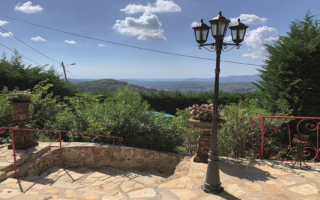Hands-free investments
Greg Taylor looks at the advantages of purchasing a leaseback holiday home
Let’s face it: not everyone has the skills, time or inclination to renovate an ancient, stone-built home or handle renting out a holiday home to make it pay its way. No doubt this is one of the reasons why new-build r�sidence de tourisme developments have proved so popular in Provence, Languedoc, the Pyr�n�es, the Alps and other key tourist destinations.
The objective of r�sidence de tourisme accommodation is to drive the holiday rentals market and boost the local economy, so this type of property is typically located in ski resorts, on golf courses, on the Mediterranean, and also on shores of the Atlantic and the English Channel.
One of the major benefits of such property is that it provides a no-hassle second home and, thanks to the French government-backed leaseback scheme, your bolthole can be painlessly rented out to other holidaymakers. Many r�sidence de tourisme offer facilities such as a golf course, clubhouse, tennis courts, health and beauty spa, restaurant and swimming pool; these add to the cost but boost the pulling power’ of your property in the eyes of rental clients.
People who purchase leaseback apartments are investing in more than just bricks and mortar. They are buying into a way of life – be it a golfer’s paradise in Normandy, a Mediterranean marina in sunny Languedoc or action-packed winter sports in an Alpine resort. But besides the emotional pull of such a purchase, there are some solid financial incentives.
The leaseback scheme was born when the French government saw there was a shortage of rental property available, exacerbated by the fact that many holiday homes sat empty, as their owners did not want (or did not know how) to manage short-term rentals. It was decided to create an incentive for companies to build quality property developments in areas popular with tourists, and support the local economy by achieving high year-round occupancy . The r�sidence de tourisme scheme was launched, allowing developers to offer leaseback purchases that would encourage investors to buy brand new units in such projects.
Here’s how it works. The buyer purchases the freehold of a property within a r�sidence de tourisme, be it a ski chalet, beachside apartment or villa on a golf course. The unit is sold furnished, and the owner then leases it back to the developer (or an accredited property management firm) for a fixed number of years (usually nine to 11) under a commercial lease (un bail commercial). Within the lease, the owner can use the property for several weeks of the year, with a fixed rental income guaranteed for the rest of the year. The level of guaranteed returns can vary, decreasing as personal use increases.
The management firm or property developer sub-lets the units on a short-term basis, offering hotel-style services such as cleaning and changeovers, which means that the rent charged is subject to VAT. The French government offsets the VAT payable on the purchase of the property against that charged to the short-let clients, hence the buyer receives a huge 19.6% discount on the purchase price, which is a major incentive.
The financial aspect aside, the beauty of leaseback is that there is a considerable range of property styles and locations to choose from. Besides the traditional coast, ski or golfbased developments already cited, there are ancient stately homes being renovated to create luxury resorts, Languedoc’s Ch�teau de Lavagnac (above) being a prime example.
Greg Taylor is co-founder of Languedoc website www.cremede-languedoc.com
Case study
Jim and Sharon Coltrane own a home within a r�sidence de tourisme project on the edge of a village in Languedoc-Roussillon.
“We purchased a two-bedroom townhouse on a resort development in an area famous for its wines. We bought off-plan, but the developer (Garrigae Resorts) gave us plenty of documentation about the project, the properties (inside and out), and all the facilities and amenities on site.
“We chose the area because we’re big fans of the Mediterranean lifestyle – the food and wine, local festivals, vineyards, blue skies and sunshine. The resort we’ve bought into includes a spa, children’s club and restaurant, and it even has its own vineyard and olive grove.
“Once we’d visited the area (easily done, as it’s so well-served by low-cost flights), met the developer and checked out the site, we knew we had found the right place. We bought when the project had just been launched, so the price was very reasonable, and buying leaseback means we got a VAT rebate of 19.6%, which was an incentive too! The apartment will be our family holiday home, but it will also generate some income by being let out to others. The developer offered us four different lease options, depending on how much time we wanted to use the apartment ourselves, and the rate of return we were looking for. What we don’t have is the hassle of finding tenants or managing maintenance, bookings or changeovers!
“There are annual maintenance fees to be paid, of around €20 per square metre, which includes a contribution to the upkeep of all private and common areas. Our lease is for a fixed term of nine years, with an optional renewal for a further 11 years and beyond, and it’s index-linked. Hopefully our purchase will be a good investment – according to our research, there is potential for capital growth in this part of the south of France.
“For us, the main benefits of buying this type of property were the 19.6% discount on the purchase price, and the structured usage and finance. We use our apartment for a fixed amount of time and, when we’re not there, it is rented out, and earns us money to boot. It’s a hands-free’ arrangement which is ideal for busy people who don’t want to be troubled by admin.”
Share to: Facebook Twitter LinkedIn Email


